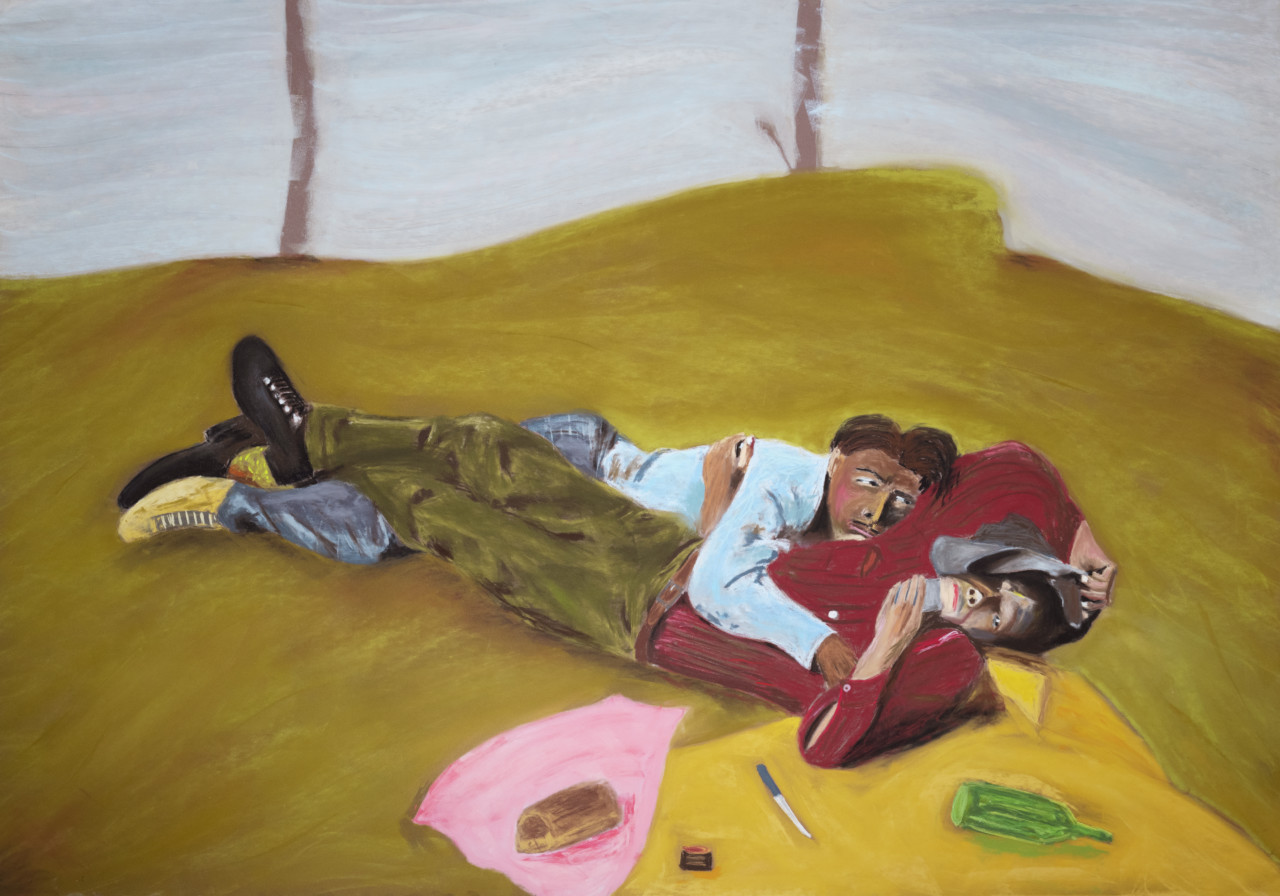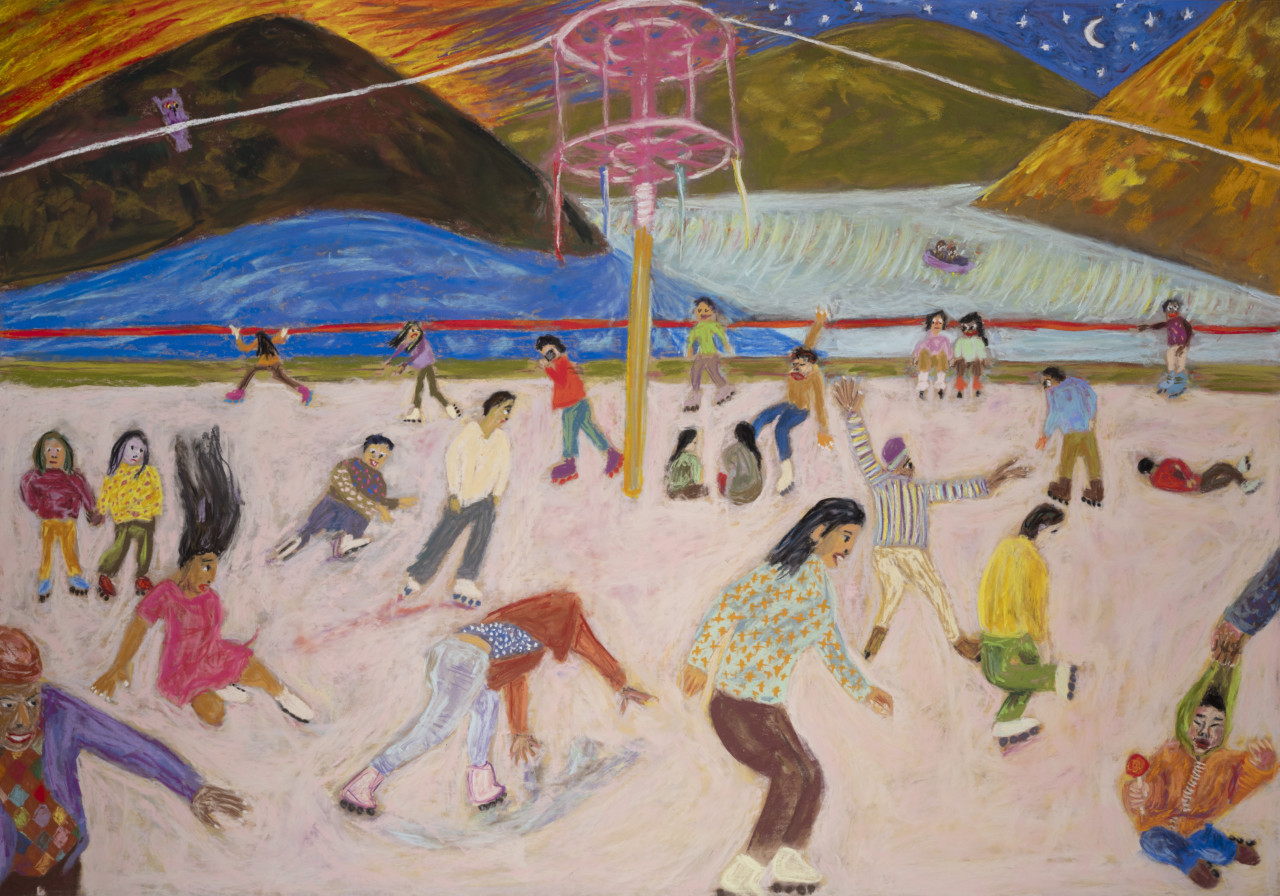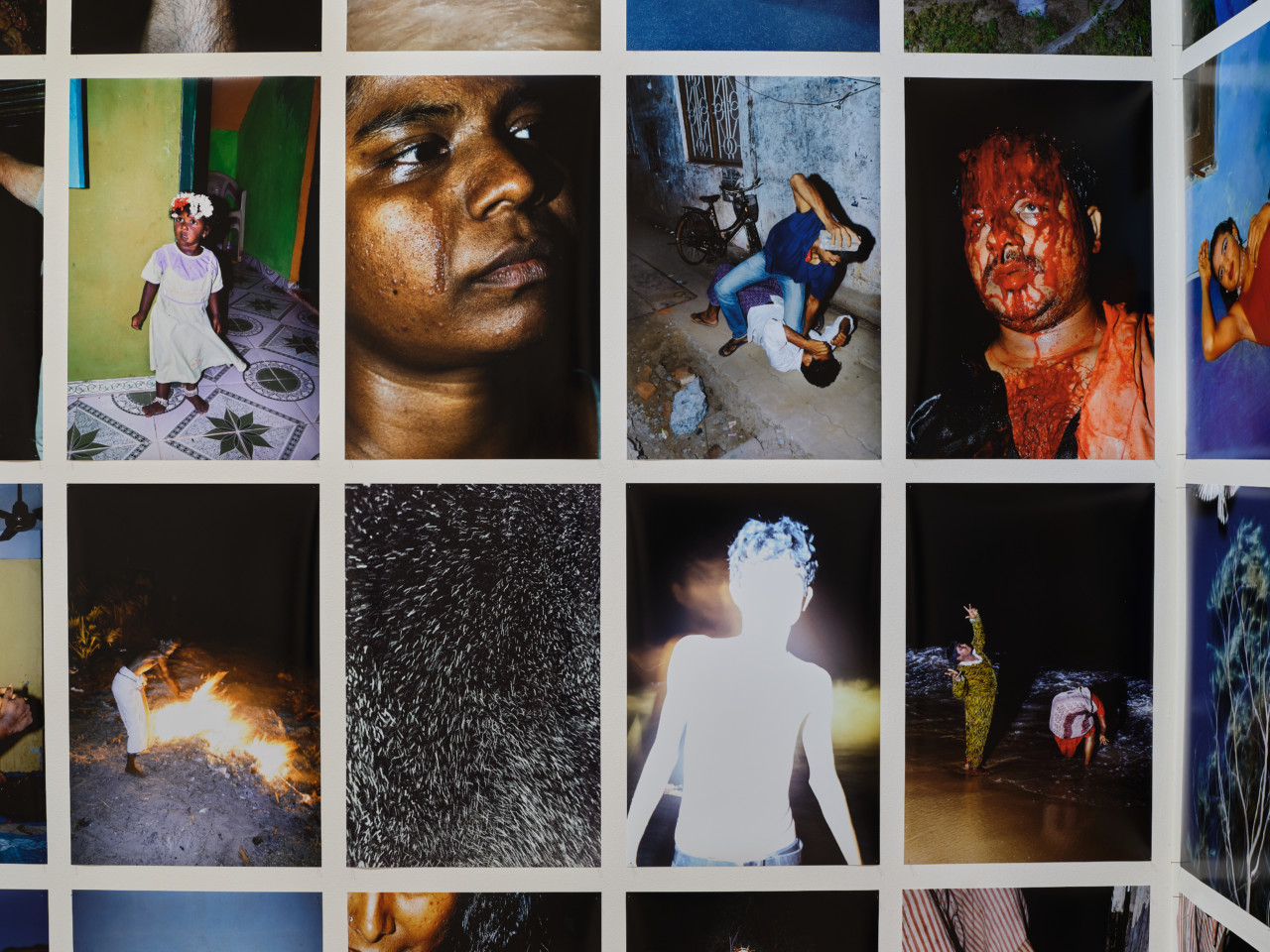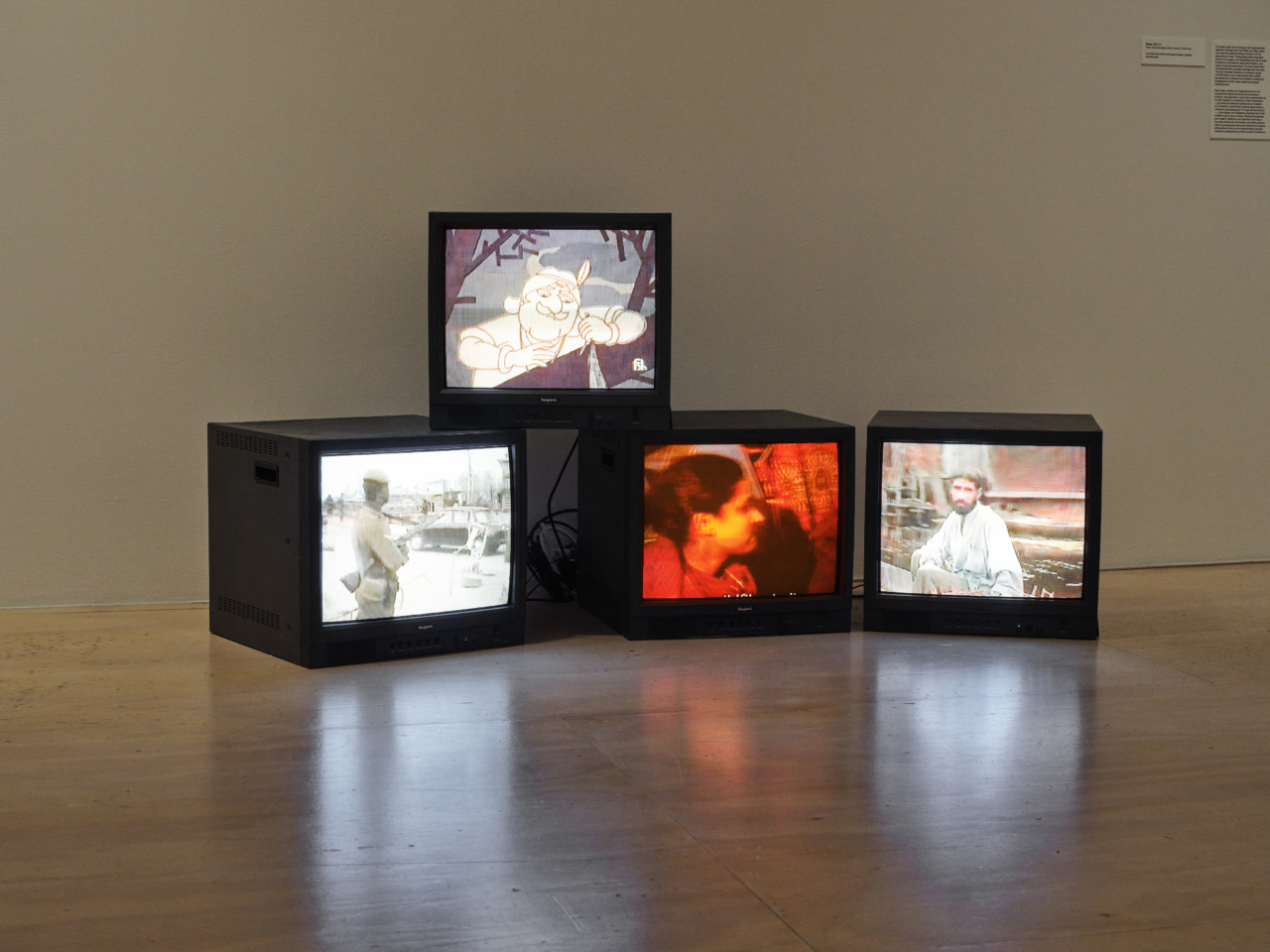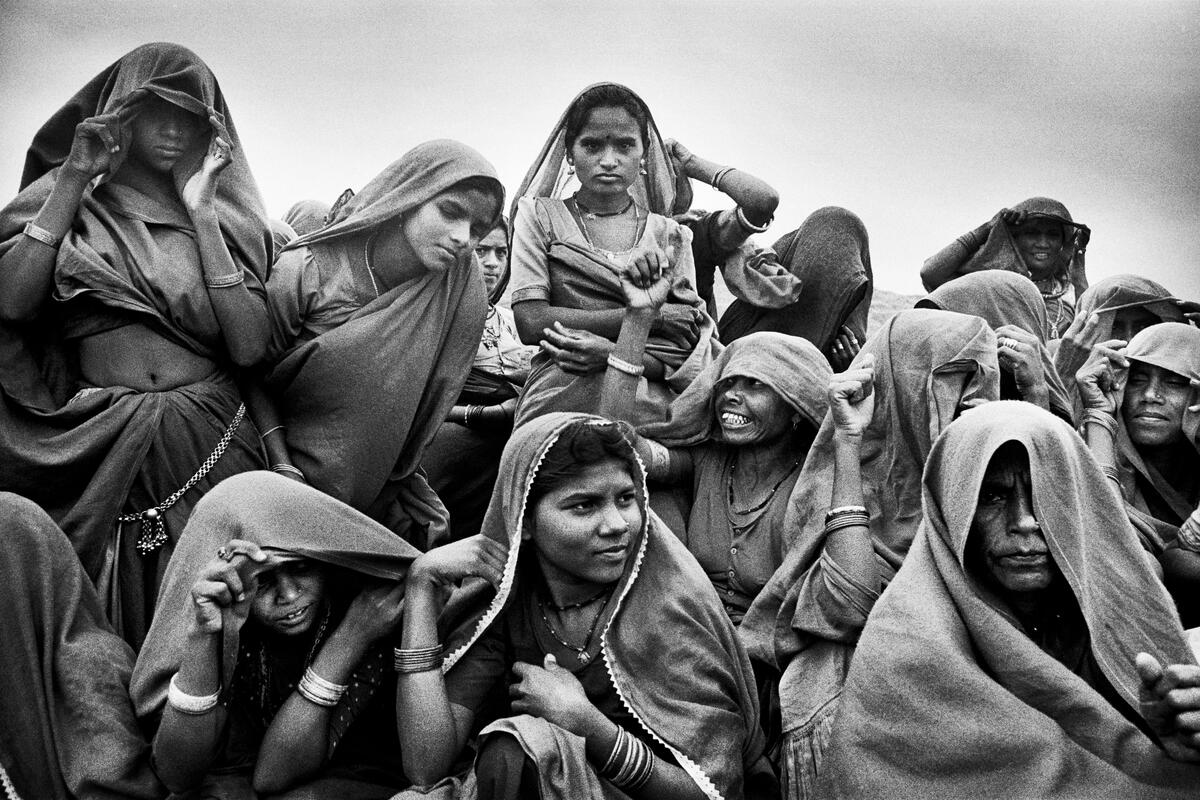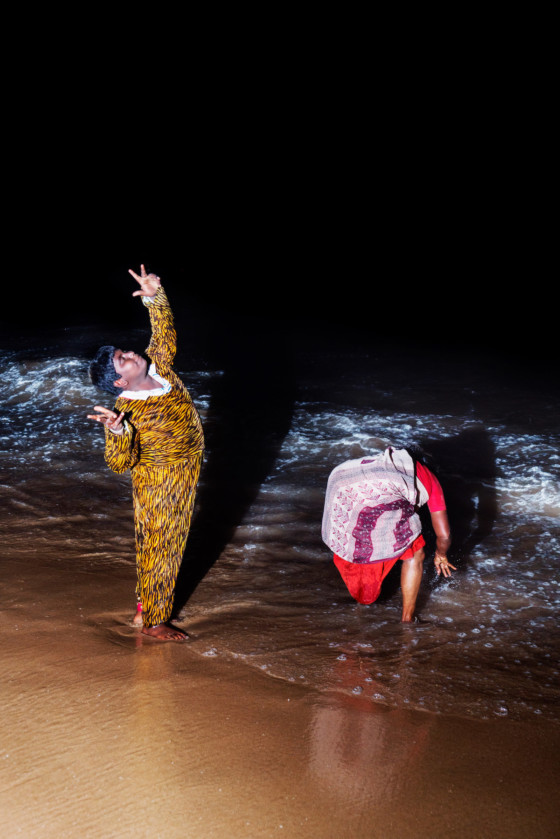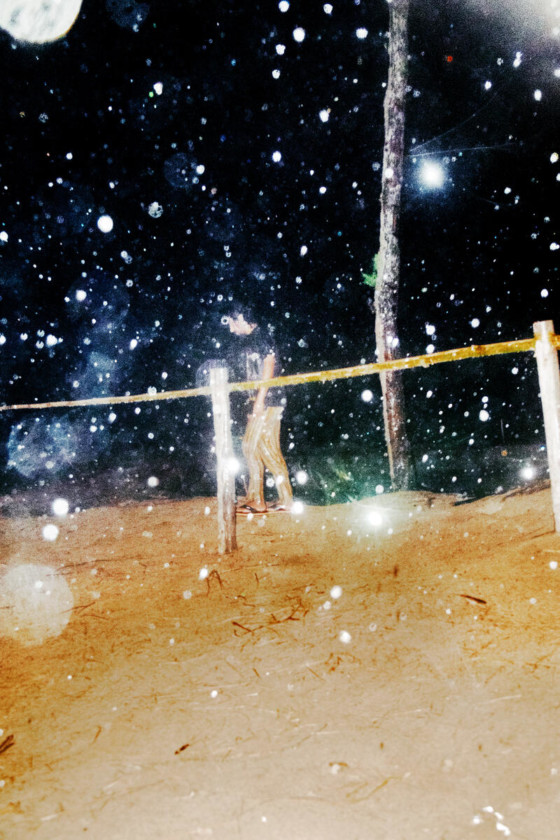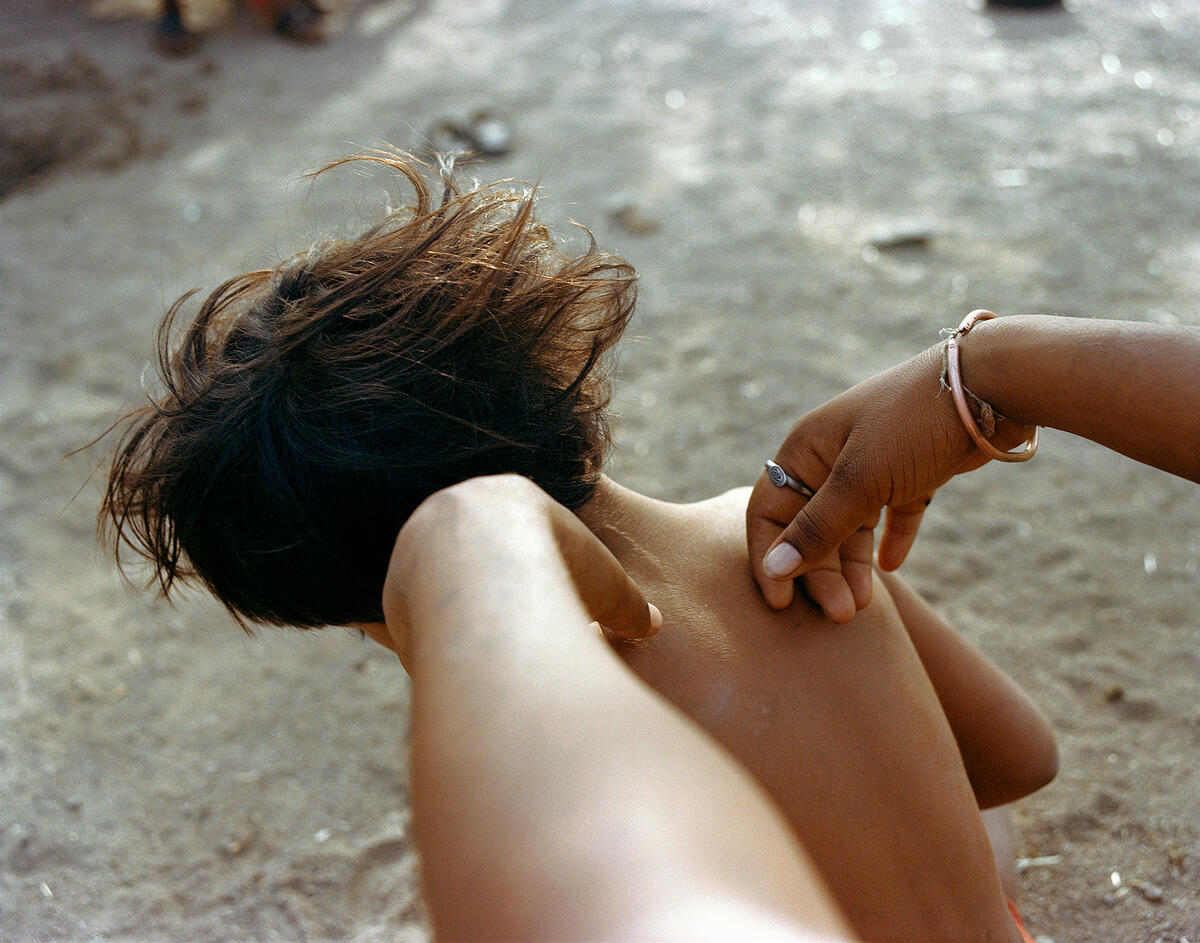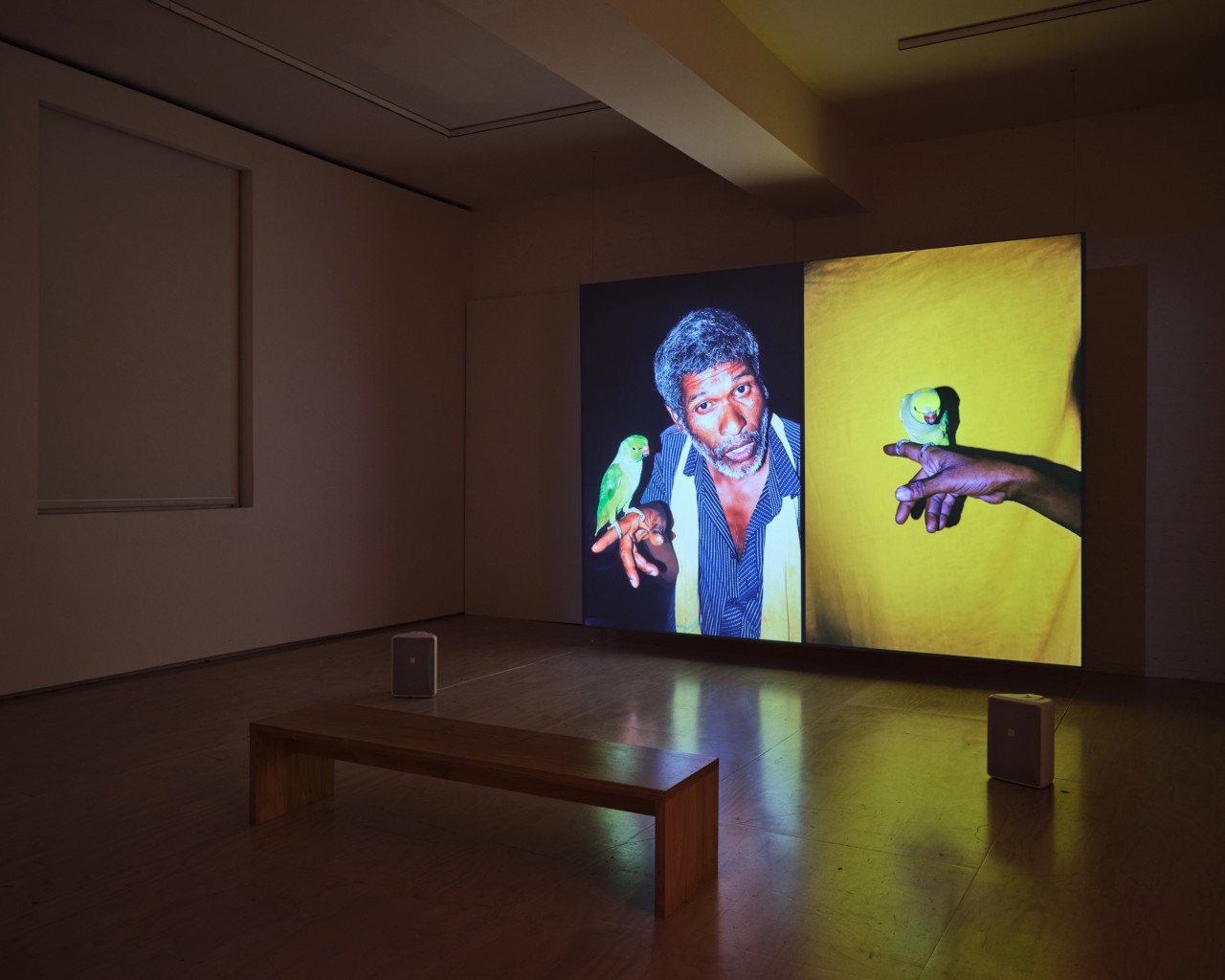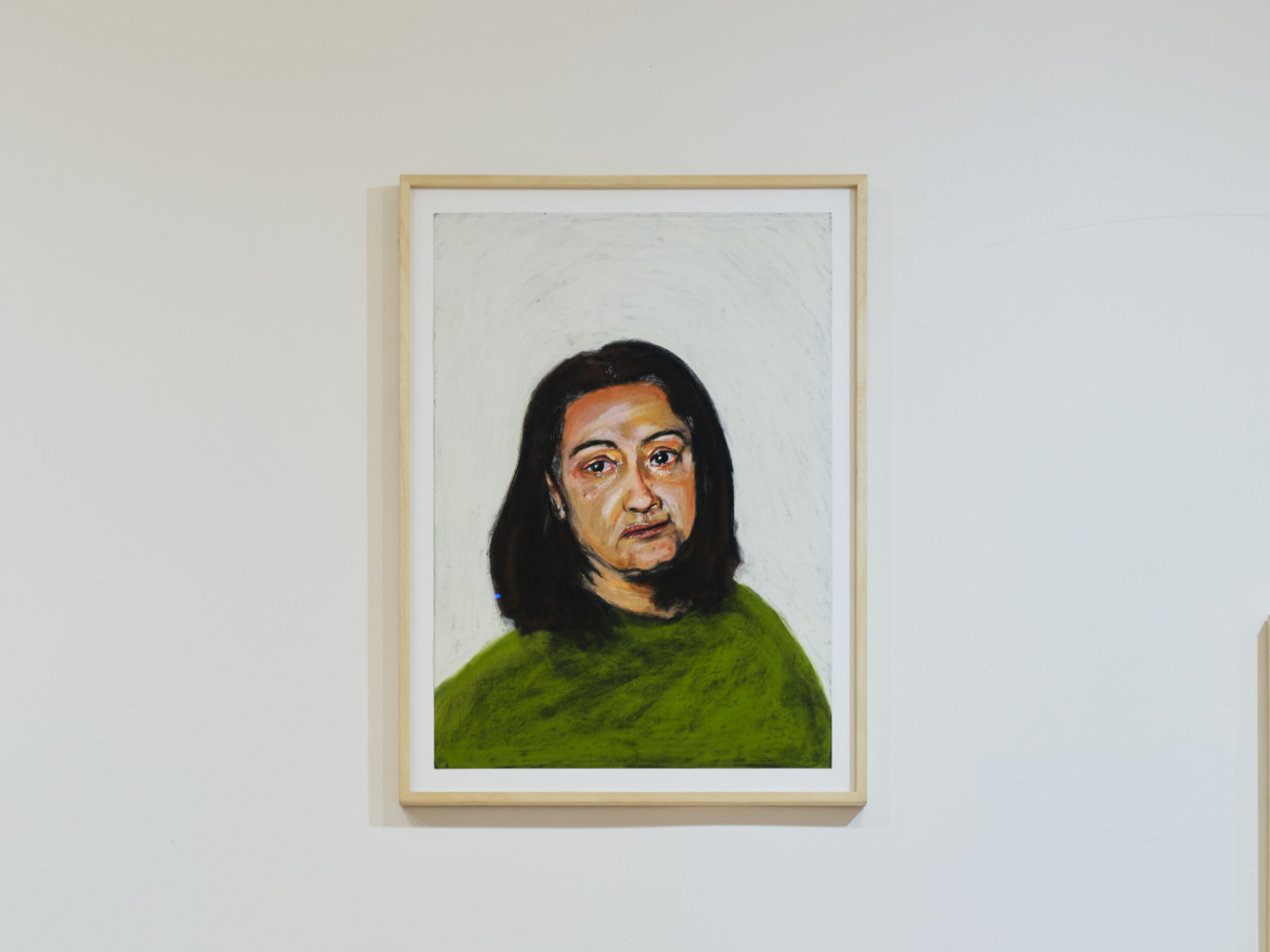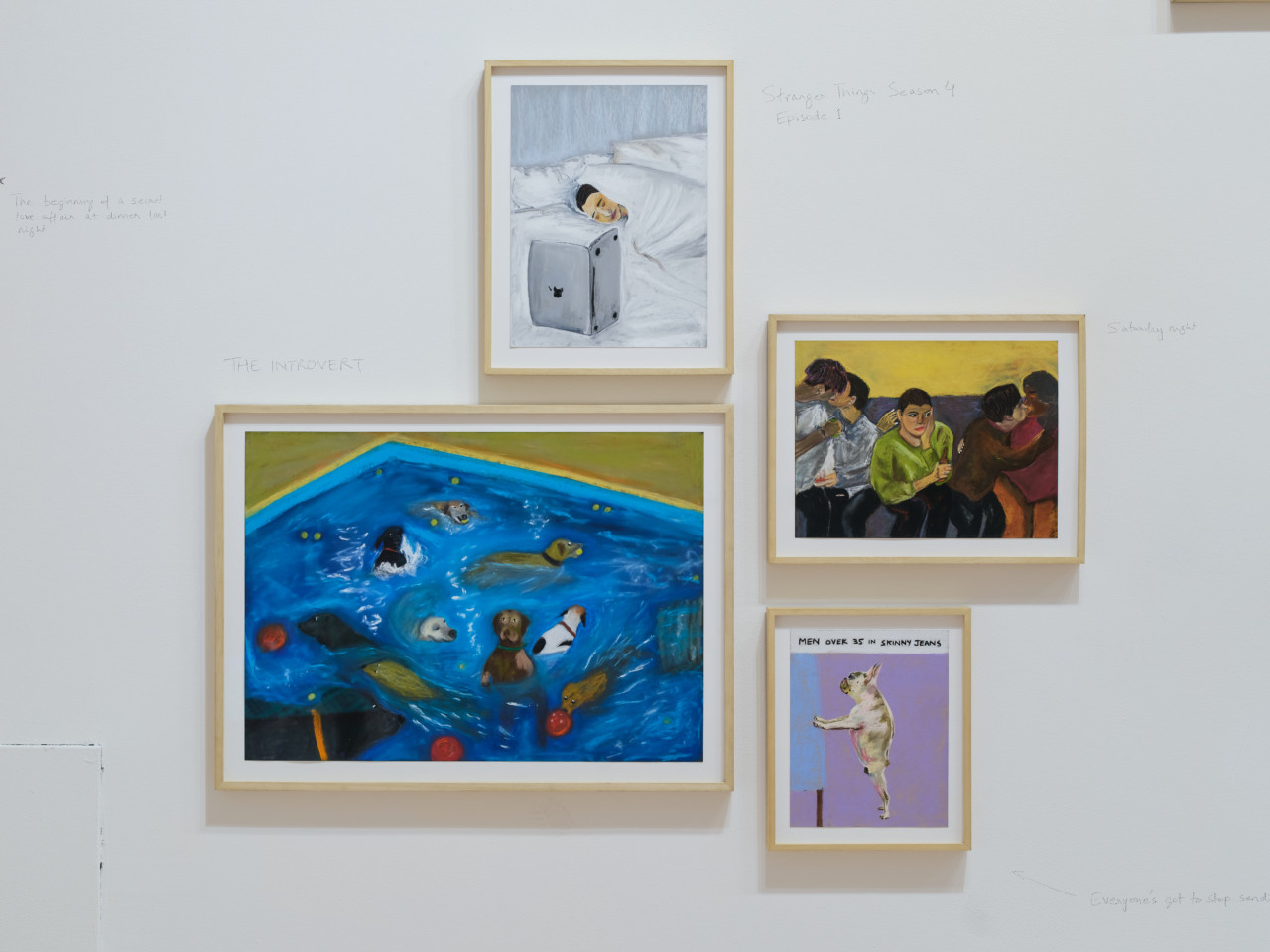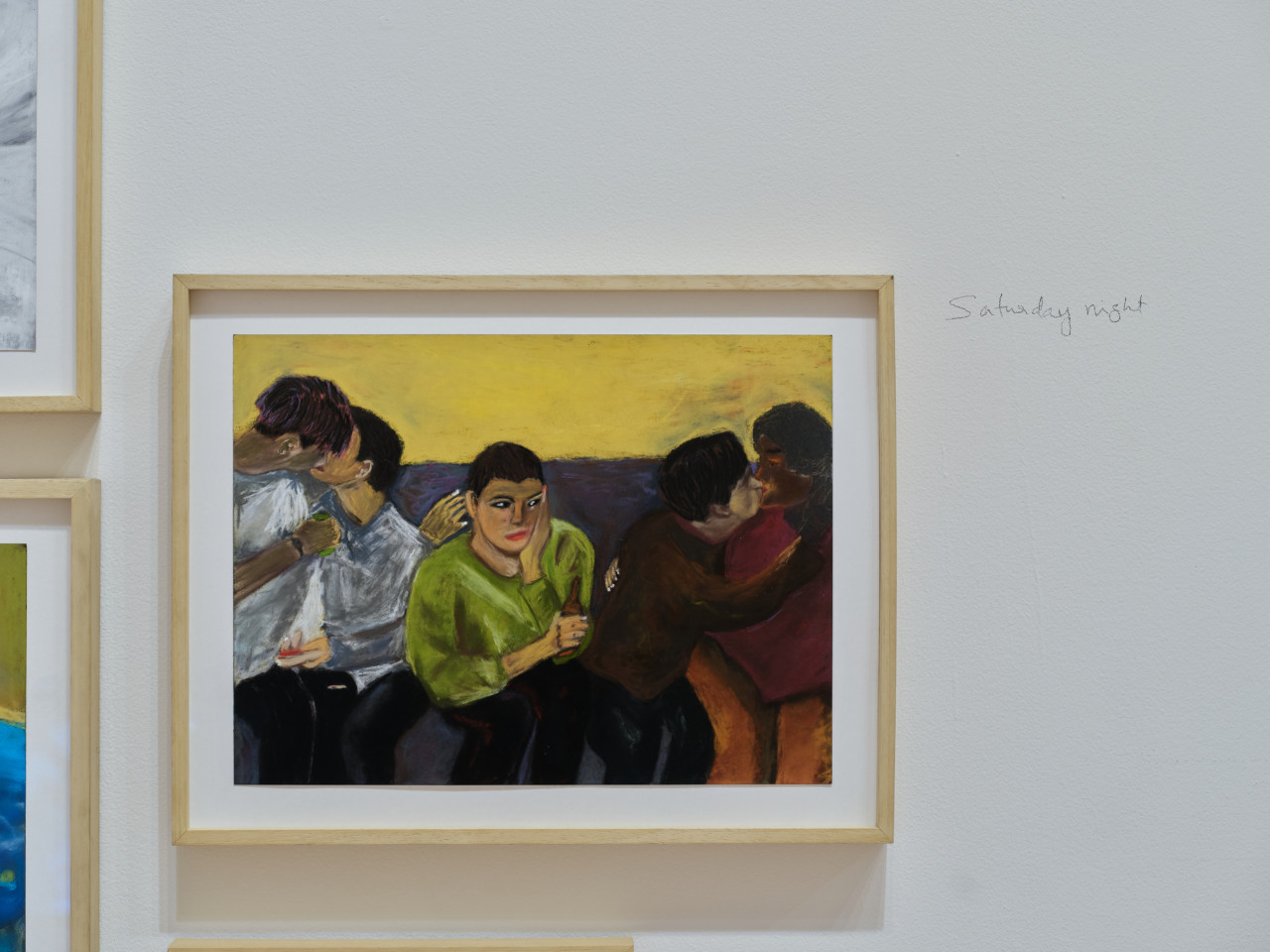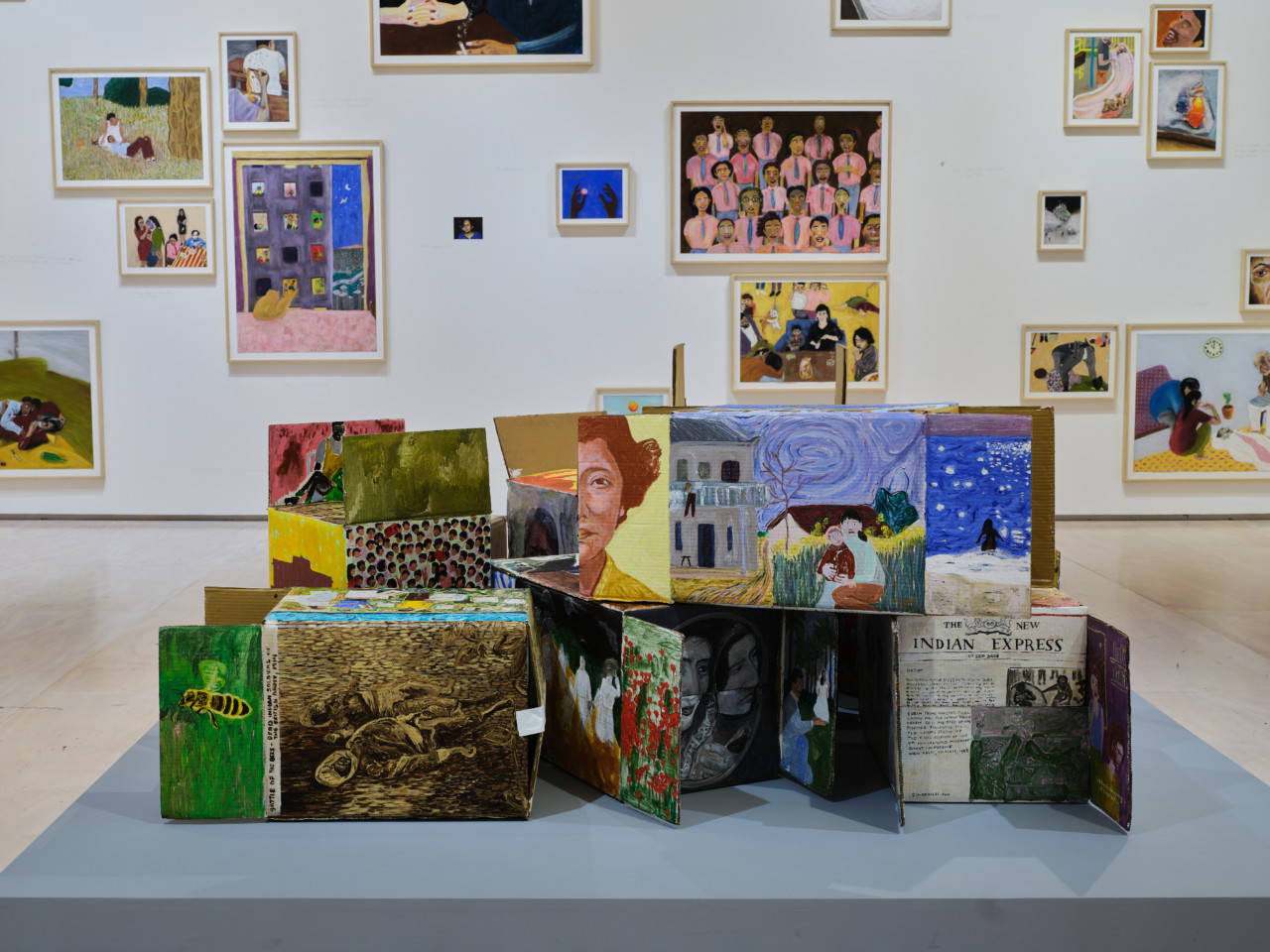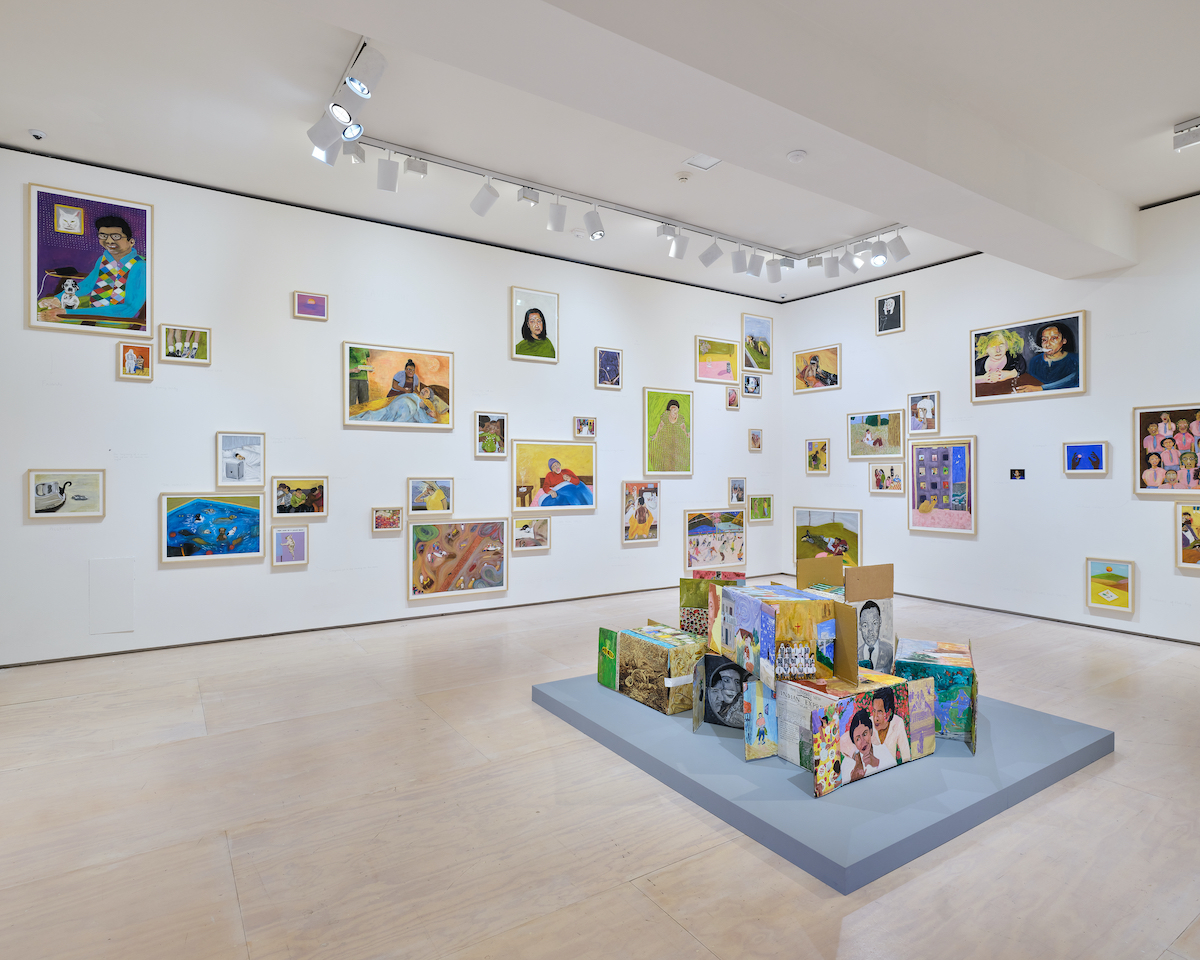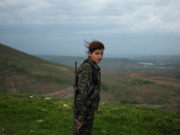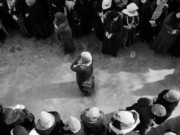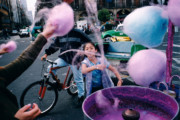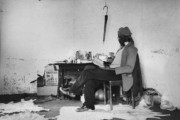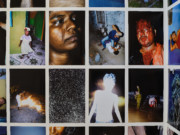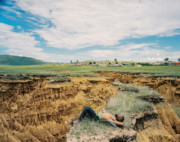Two Decades Confronting the Personal and Political
Artist Sohrab Hura’s first U.S. survey, Mother, is now showing at MoMA PS1 in Queens, New York
Renowned for his self-published photobooks among many other accomplishments, Sohrab Hura raised the bar again this past October with the release of Things Felt But Not Quite Expressed. The new book, published by Mack, offers Hura’s tender depictions of family, friendship, and daily life through soft pastel illustrations he made from 2022 to 2024. Blending whimsicality and humor with surreal scenes of isolation, illness, and despair, the collection captures life’s fleeting moments through an impressionist style meant to not only provoke intense feelings, but preserve them.
These recent drawings make up just a fraction of Mother, the sprawling five-room survey of Hura’s work now on view at MoMA PS1 in Queens, New York, through February 17, 2025. The show, organized by Ruba Katrib, Curator and Director of Curatorial Affairs, with Sheldon Gooch, Curatorial Assistant, marks Sohrab Hura’s first U.S. solo exhibition.
Sohrab Hura: Mother traverses the artist’s prolific 20-year career through works of photography, film, sound, drawing, painting, and text — exhibiting them all together for the first time ever. With more than 50 works, consisting of well over 200 images, Hura’s creations spill into one another and entice attendees with dense, sensorial wonder worthy of a whole afternoon, if not an entire lifetime.
Self-trained from the start, Hura began his work in India through documentary photography and has expanded his multi-layered, experimental practice ever since. Focusing on everyday moments revealing the impact of political and social forces, his work addresses the legacy of colonial borders, the trauma of partition, and the shifting ecosystem of the Indian subcontinent. Through personal and political introspection, the exhibition reveals Hura’s changing existential concerns around the ethics of image making in documentary work and the catharsis of wrestling with that disquiet.
"I was just trying to see if I could figure a way out to generate forces of push and pull within each room and across the rooms. It’s a bit like book-making for me, in which ‘play’ is really important."
- Sohrab Hura
In one room, we find Hura’s early work, Pati (2010), a film exploring rural Madhya Pradesh. Here, Hura examines the movement to enact the 2005 Mahatma Gandhi National Rural Employment Guarantee Act, which promised a minimum of 100 days of work to all citizens. The film exists as an extension of his photographic project, Land of a Thousand Struggles — his first project after finishing his university studies.
The composition of both film and photographs, both depicted in this one room reflects his longstanding relationship with the region, now drought-stricken due to deforestation. Along with his narration, Hura pays keen attention to the everyday lives of local residents remaining in the area through both stills and video taken on his 50-day bus journey through north India’s rural belt.
In Snow (2015–ongoing), Hura turns to Kashmir, documenting the contested region’s transformation from the first snowfall through the spring thaw, using photographs and found television footage to contrast the landscape with sociopolitical tensions.
Through more than 50 photographs, a film, and a book, The Coast (2019) centers on shifting national politics and the subcontinent’s coastline, using the coast as a metaphor for skin that is going to burst open. The film, The Coast, which focuses specifically on a Tamil Nadu beach where an annual masquerade festival draws crowds to the ocean for a symbolic washing away of sins, is projected now in large in an adjourning room.
In another room dedicated to one of his film pieces, The Lost Head & The Bird (2017) collages provocative footage from Whatsapp videos, Nintendo games, and news media, offering an intense, jumbled, all-consuming quilt of reality and fiction through images. Through rapid montage, the logic of violent imagery circulating across digital platforms becomes completely entrancing. “There is a sort of new language of photography coming into existence because of the looseness of social media.” says Hura. “It’s weird, it’s surprising, it’s ugly, it’s beautiful, it’s voyeuristic, it’s narcissistic, it’s ordinary, it’s precise, it’s misleading, it’s a lot of contradictions put together.”
Mother, the exhibition’s title, is a nod to the familial ties integral to his extensive oeuvre. In works like Bittersweet (2019), a film collage made up of photographs and video clips, crafted over the course of 10 years, Hura focuses on family life, particularly the relationship between his mother and her dog, Elsa. Hura’s mother had been diagnosed with acute paranoid schizophrenia, and as he photographed and filmed, it became clear to him that the project was a “search for meaning and closure with me questioning and discovering the banalities of everyday life at home.” As an additional layer to the visual, Hura here experimented with what he refers to as “sound extractions” from the images themselves, adding his discoveries to the film collage as its moving score, which now echoes through the room.
Partly because of this changing digital landscape, Hura has expanded beyond the lens-based strategies for which he first gained notoriety. He started drawing and painting more seriously in recent years when he began to feel disillusioned and unable to connect with the permanency of photographs. Mother includes a selection of newly produced pastel drawings in Things Felt But Not Quite Expressed (2022–ongoing) and gouache paintings in Ghosts in My Sleep (2023–ongoing), revealing scenes and memories both real and imagined.
Hura is not the first Magnum photographer whose visual arts discipline does not begin and end with photography. Henri Cartier-Bresson, by 1968, began to curtail his photographic activities, preferring to concentrate on drawing and painting just as he had before taking up photography. That same year, Sergio Larrain turned toward oil painting and other practices as he took fewer photographs. Eli Reed studied pictorial illustration as an undergraduate and was a painter in his formative years. Similarly, Cristina García Rodero studied painting at university before pursuing photography. In recent years, Mikhael Subotzky has produced several paintings and collages in addition to his photographic work. Hura’s new paintings and drawings reflect the latest in an extensive legacy of multidisciplinary visual art practitioners at Magnum, while adding an entirely new dimension.
In his most recent work, Timelines (2024–Ongoing), Hura painted a series of cardboard boxes that sit on a rectangular platform at the center of one of the rooms. The boxes can be folded and unfolded to make different narrative combinations. “The timelines run across people, places, events and even little things like bees,” says Hura.
MoMA PS1 characterizes Timelines this way: “A tableau of images — including the artist’s parents, student protests, and Rosa Parks’ mugshot — collide in this new body of work that considers the recursive nature of storytelling. Scenes from films, iconic photographs of international events, and personal images cover the different faces of boxes, which can be arranged in a myriad of ways. Whether stacked, flattened, opened, or closed, the works’ viewpoints resist linear narratives, highlighting the contradictions that arise when ‘unpacking a story.’”
Not only does this work represent the new directions Hura is pushing in, but the ways he reinvents and reengages his past explorations. “I’m quite happy to allow a new work to emerge out of a part of a pre-existing work. It’s like gardening. You tend to the plants, sometimes you take cuttings, sometimes you can graft a cutting onto another plant and so on.” said Hura in an interview with STIRworld magazine. “The idea is really to work with how I want to be with the plants and not how I want to see the plants. My work is also like my garden.”
Mother is on view at MoMA PS1 through February 17, 2025. Hura’s latest book, Things Felt But Not Quite Expressed, was published in October 2024.
Sohrab Hura is the third photographer to take part in the Magnum Signature Drops, a time-limited release of hand-finished posters and prints. From December 3 to 6, for 72 hours only, a signed diptych by Hura titled “Cats and Stars” will be available on the Magnum Store. For more information, and to get priority access, click here.



